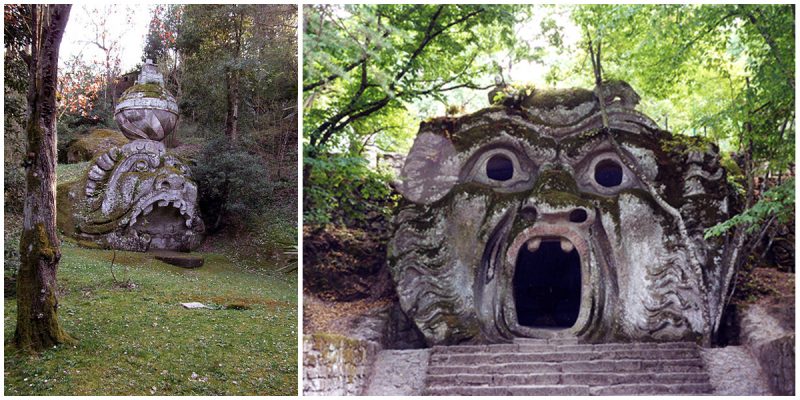The Sacro Bosco (“Sacred Grove”), colloquially called Park of the Monsters (Parco dei Mostri in Italian), also named Garden of Bomarzo, is a Manieristic monumental complex located in Bomarzo, in the province of Viterbo, in northern Lazio, Italy. The gardens were created during the 16th century. They are composed out of a wood located at the bottom of a valley beneath the castle of Orsini and populated by sculptures and small buildings among the natural vegetation.
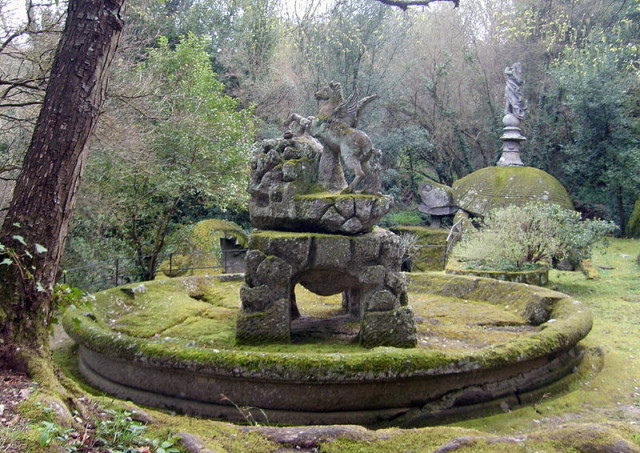
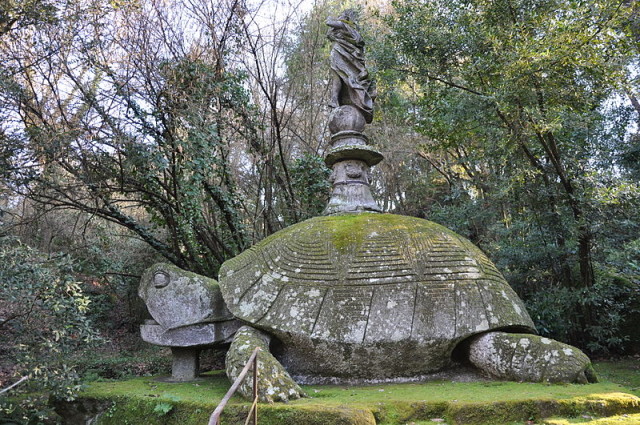
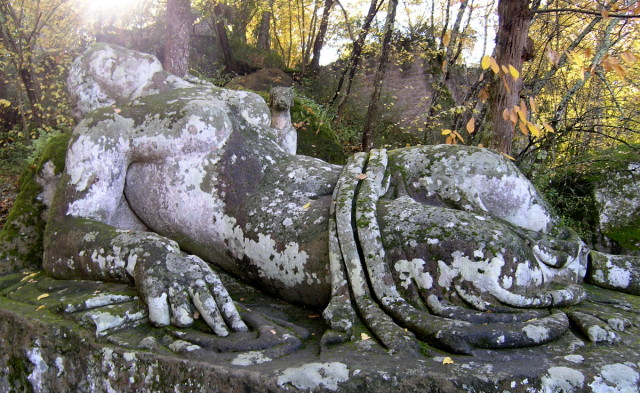
The park’s name stems from the many larger-than-life sculptures, some sculpted in the bedrock, which populate this predominantly barren landscape. It is the work of Pier Francesco Orsini, called Vicino (1523–1585), a condottiero and patron of the arts, greatly devoted to his wife Giulia Farnese, not to confuse her with her maternal grandmother Giulia Farnese, the mistress of Pope Alexander VI. When the wife of Orsini died, he created the gardens. The design is attributed to Pirro Ligorio and the sculptures to Simone Moschino.
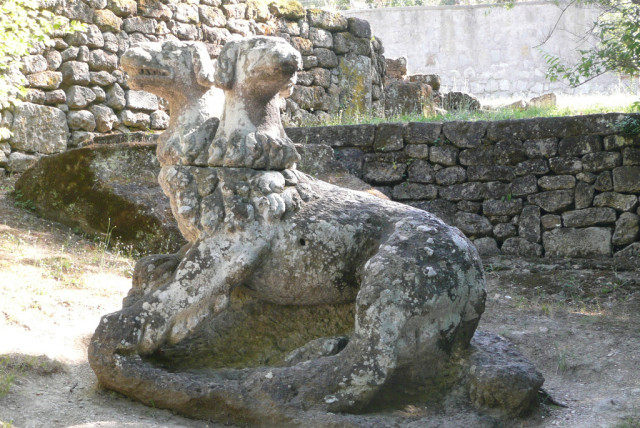
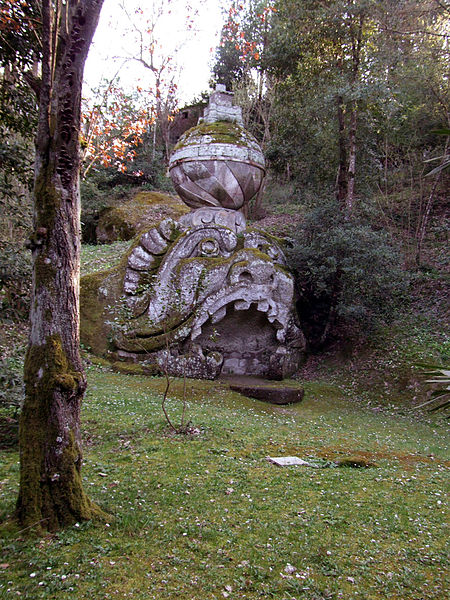

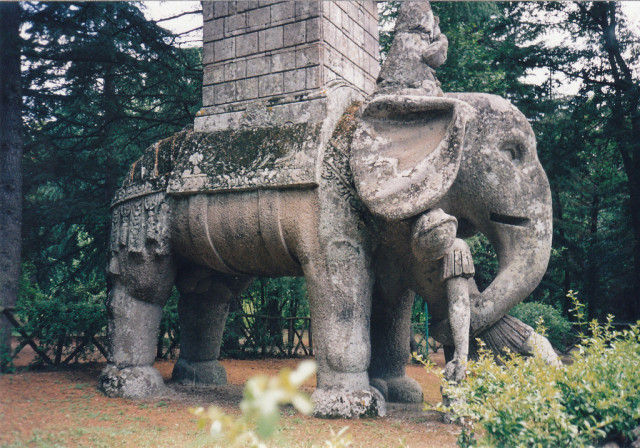
During the nineteenth century and deep into the twentieth the garden became overgrown and neglected, but in the 1970s a program of restoration was implemented by the Bettini family, and today the garden, which remains private property, is a major tourist attraction.

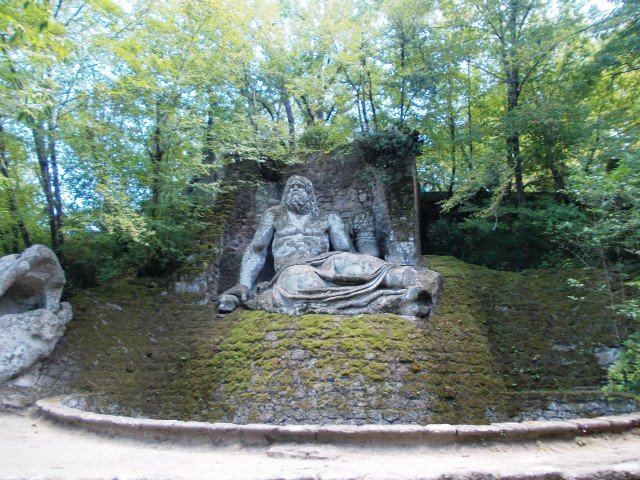
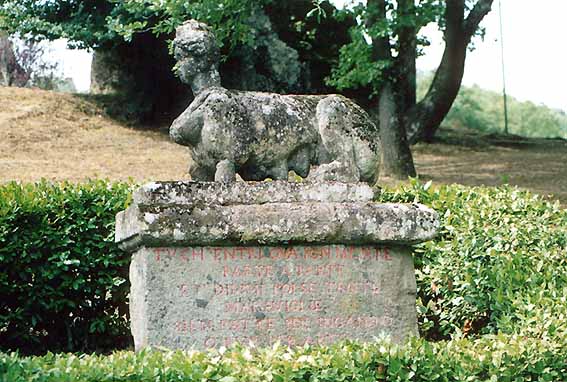
The park of Bomarzo was intended not to please, but to astonish, and like many Mannerist works of art, its symbolism is arcane: examples are a large sculpture of one of Hannibal’s war elephants, which mangles a Roman legionary, or the statue of Ceres lounging on the bare ground, with a vase of verdure perched on her head.
The many monstrous statues appear to be unconnected to any rational plan and appear to have been strewn almost randomly about the area, sol per sfogare il Core (“just to set the heart free”) as one inscription in the obelisks says.
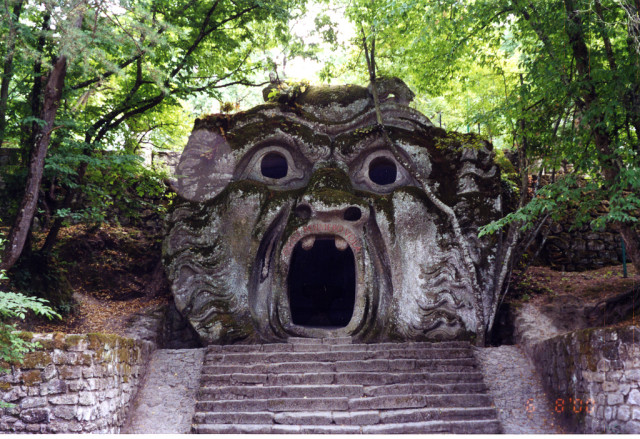
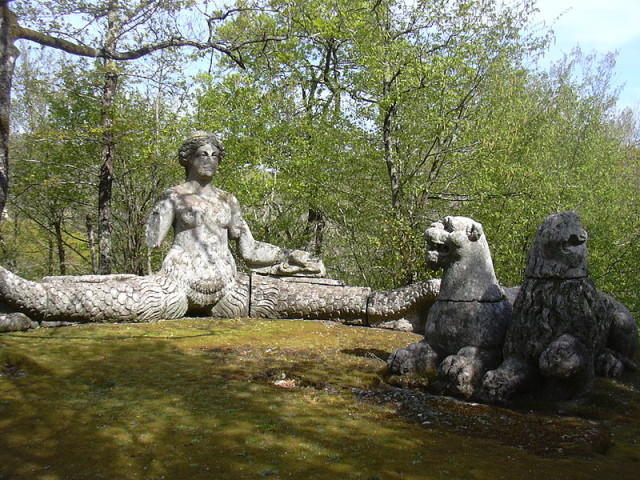

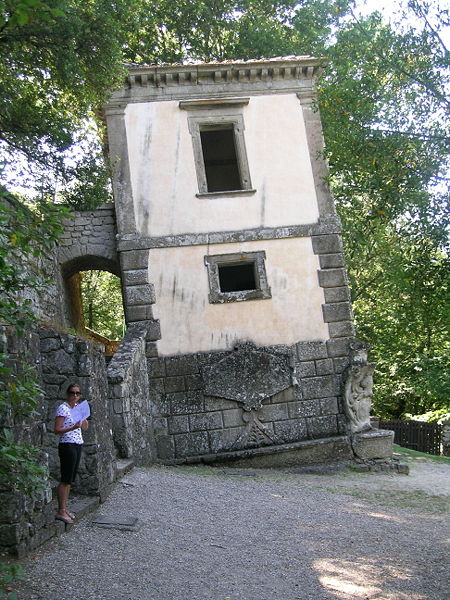
Allusive verses in Italian by Annibal Caro (the first one is of him, in 1564), Bitussi and Cristoforo Madruzzo, some of them now eroded, were inscribed besides sculptures.
The reason for the layout and design of the garden is largely unknown : perhaps they were meant as a foil to the perfect symmetry and layout of the great Renaissance gardens nearby at Villa Farnese and Villa Lante. Next to a formal exedra is a tilting watchtower like casina, the so-called Casa Pendente (“Leaning House”).
